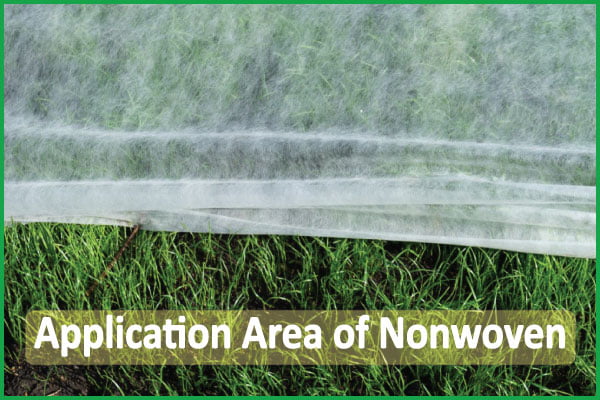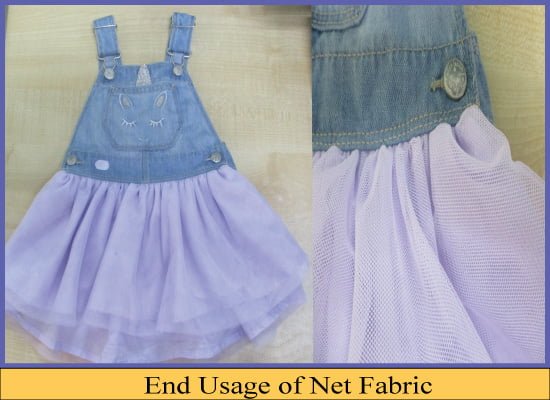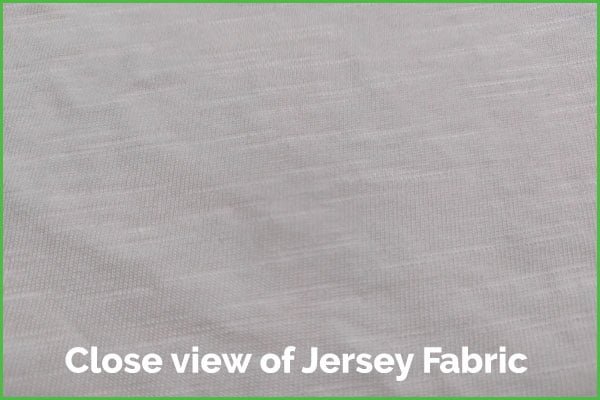Nonwoven Fabrics: An Overview
Last updated on November 5th, 2023 at 12:23 am
Definition of Nonwoven Fabric
Non-woven fabric, also known as Non-woven textile or Non-woven material, is produced by bonding or felting fibres together without weaving or knitting them into a fabric. Unlike traditional woven or knitted fabrics, created by interlacing or interloping yarns in a specific pattern, Non-woven fabrics are made by mechanically, chemically, or thermally bonding fibres or felting them through heat, pressure, or chemical processes.

Non-woven fabrics are typically made from various materials, including synthetic fibres such as polyester, polypropylene, and nylon, as well as natural fibres like cotton, wool, and viscose. These fibres are often mixed or layered to create a fabric with specific properties, such as strength, durability, softness, water resistance, or breathability.
Non-woven fabrics are popular because they can be manufactured at a lower cost than traditional woven or knitted fabrics and can be designed to have specific characteristics tailored to the needs of different applications.
Properties of Nonwoven Fabric
The Non-woven fabric possesses several unique properties that make it suitable for various applications. Some of the key properties of Non-woven fabric include the following:
Porosity
This fabric is highly porous, allowing air and liquids to pass through easily. This property makes it suitable for applications such as filtration, where porosity allows for efficiently filtering particles or contaminants.
Flexibility
This fabric is highly flexible and easily moulded into different shapes and forms. This property makes it suitable for applications requiring conformability and flexibility, such as in medical dressings, disposable diapers, and automotive interiors.
Strength
This fabric can have varying strength levels, depending on the manufacturing process and materials used. Some fabrics can exhibit high tensile strength, tear strength, and burst strength, making them suitable for applications where strength and durability are essential, such as in geotextiles, construction materials, and automotive components.
Absorbency
Some fabrics are highly absorbent, absorbing liquids quickly and holding them within the fabric structure. This property makes them suitable for wipes, medical dressings, and hygiene products.

Barrier Properties
This fabric can be engineered to exhibit barrier properties, such as water resistance, oil resistance, and chemical resistance. This makes Non-woven fabrics suitable for applications that require protection from liquids, chemicals, or other substances, such as protective clothing, packaging materials, and medical barriers.
Softness
These fabrics can be engineered to be soft and gentle to the touch, making them suitable for applications where comfort and sensory properties are essential, such as hygiene products, wipes, and medical textiles.
Breathability
Some fabrics are breathable, allowing air and moisture vapour to pass through while preventing liquids from passing through. This property suits them for medical dressings, hygiene products, and breathable barriers.
Cost-Effective
These fabrics can be produced relatively cheaply compared to traditional woven or knitted materials, making them an economical choice for many applications.
Nonwoven Fabric Manufacturing Process
Non-woven fabric is produced through various manufacturing processes, broadly categorized into mechanical, chemical, and thermal methods. Here is a general overview of some standard Non-woven fabric manufacturing processes:

Mechanical Bonding
Mechanical bonding produces non-woven fabrics where fibres are entangled through mechanical means rather than chemical or thermal bonding. In mechanical bonding, fibres are mechanically intertwined and locked together, resulting in a fabric with good strength and stability. Mechanical bonding involves several stages, including web formation, fibre opening, blending and mixing, and bonding. Mechanical bonding methods include needle punching and hydroentanglement.
Needle Punching
In needle punching or felting, fibres are fed onto a conveyor belt or web. A series of barbed needles penetrate the web, repeatedly entangling and interlocking the fibres. The barbs on the needles catch the fibres and pull them through the web, creating a fabric with good tensile strength and dimensional stability. The entanglement of fibres can be controlled to achieve different fabric properties such as thickness, density, and porosity. Needle punching is commonly used in automotive interiors, geotextiles, and insulation applications.
Learn more about: Needle Punching Method for Nonwoven
Hydroentanglement
Hydroentanglement, spun lacing, or water jet entanglement involves high-pressure water jets to bond the fibres. The fibres are mixed with water and sprayed onto a moving belt or web. The high-pressure water jets entangle the fibres and form a fabric. The fabric is dried, and additional finishing treatments can be applied. Hydroentanglement is widely used in applications such as wipes, medical textiles, and filtration, where softness and absorbency are desired.
Chemical Bonding
In this process, chemicals bond the fibres together. Chemical bonding methods include adhesive bonding and foam bonding.
Adhesive Bonding
Adhesive bonding is a process where chemicals, such as adhesives or binders, are applied to the fibres to bond them together. The fibres are typically laid down in a web form, and the adhesive is used as a spray, foam, or powder. The web is then passed through heated rollers or ovens to activate the adhesive, which bonds the fibres together upon cooling. Adhesive bonding is commonly used in applications such as hygiene products like diapers, feminine care products, adult incontinence products, and automotive and filtration applications.
Foam Bonding
In this process, a foam layer is applied to the fibres, and heat is used to bond the foam and fibres together. Foam bonding is used for applications such as carpet backing and insulation.
Thermal Bonding
Thermal bonding involves using heat to melt or soften the fibres, which bond together upon cooling. There are several methods of thermal bonding:
Point Bonding
In point bonding, heated rollers or ultrasonic energy melt and bond the fibres at discrete points, creating a patterned or embossed fabric. Point bonding is used in applications such as disposable wipes, medical gowns, and industrial fabrics.
Through-Air Bonding
Through-air bonding (TAB) is a process where heated air is blown through the web of fibres, melting and bonding them together. TAB is commonly used for lightweight and soft Non-woven fabrics, such as those used in hygiene products, filtration, and medical applications.
Calendar Bonding
Calendar bonding involves passing the fibres through heated rollers, which apply heat and pressure to melt and bond the fibres together. Calendar bonding can create Non-woven fabrics with different thicknesses, densities, and surface textures and is used in applications such as automotive interiors, filtration, and insulation.
Nonwoven Fabric Application Area
Non-woven fabrics have various applications in various industries due to their unique properties, such as flexibility, durability, and cost-effectiveness. Some of the common application areas for non-woven fabrics include:
Healthcare
Non-woven fabrics are used in various healthcare products such as surgical gowns, face masks, and wound dressings due to their excellent barrier properties and ability to filter bacteria and viruses.
Personal Care and Hygiene
Non-woven fabrics are used in diapers, feminine hygiene products, and wet wipes due to their softness, absorbency, and liquid repellency.
Automotive
Non-woven fabrics are used in car interiors, headliners, and trunk liners due to their lightweight, acoustic, and thermal insulation properties.
Agriculture
Non-woven fabrics are used in crop protection, seedling covers, and greenhouse shading due to their ability to protect from weather, pests, and UV radiation.

Construction
Non-woven fabrics are used in geotextiles, roofing materials, and insulation due to their high strength, water resistance, and thermal insulation properties.
Filtration
Non-woven fabrics are used in air and water filtration systems due to their ability to filter out particles and pollutants.
Packaging
Non-woven fabrics are used in packaging applications such as bags, pouches, and wrappers due to their protection and durability.
Industrial
Non-woven fabrics are used in industrial applications such as wiping cloths, cleaning materials, and protective clothing due to their high absorbency, strength, and resistance to chemicals and heat.
Advantages of Nonwoven Fabric
Non-woven fabrics have several advantages over other fabrics, making them suitable for various applications. Some of the advantages of non-woven fabrics include the following:
Cost-effectiveness
Non-woven fabrics are relatively inexpensive to produce compared to woven or knitted fabrics.
Versatility
Non-woven fabrics can be made from various materials, including natural fibres, synthetic fibres, and recycled materials.
Lightweight
Non-woven fabrics are generally light, making them suitable for applications where weight is critical, such as in the automotive or aerospace industries.
Strength
Non-woven fabrics can be engineered to have high strength and tear resistance, making them suitable for heavy-duty applications.
Durability
Non-woven fabrics are resistant to wear and tear and can withstand harsh environments, making them ideal for use in outdoor applications.
Absorbency
Non-woven fabrics can be designed to have high absorbency, making them suitable for use in personal care and hygiene products.
Barrier properties
Non-woven fabrics can be designed to have excellent barrier properties, making them suitable for use in medical and industrial applications.
Ease of processing
Non-woven fabrics can be produced using various methods such as melt-blown, spun bond, and needle punching, which are relatively simple and require less energy compared to traditional weaving or knitting.
Environmental friendliness
Non-woven fabrics can be made from recycled materials, and some can be biodegradable, making them more environmentally friendly than other fabrics.
Disadvantages of Nonwoven Fabric
While non-woven fabrics have many advantages, they also have some disadvantages that should be considered when selecting them for specific applications. Some of the disadvantages of non-woven fabrics include the following:
Limited strength
Non-woven fabrics can have lower strength compared to woven or knitted fabrics, making them unsuitable for some heavy-duty applications.
Lack of drape
Non-woven fabrics can be stiff and lack the drape of woven or knitted fabrics, making them unsuitable for some apparel applications.
Lack of breathability
Some non-woven fabrics can have low breathability, making them unsuitable for applications requiring air or water permeability.
Limited color options
Non-woven fabrics can be more challenging to dye or print than woven or knitted fabrics, limiting the range of color options available.
Limited design options
Non-woven fabrics can be challenging to manipulate into complex shapes or designs compared to woven or knitted fabrics.
Environmental concerns
Some non-woven fabrics are made from synthetic materials that are not biodegradable and can contribute to environmental pollution if not correctly disposed of.
Conclusion
However, non-woven fabrics also have disadvantages, including limited strength, lack of drape, limited breathability, limited color and design options, and environmental concerns. Nevertheless, technological advances and new manufacturing techniques address some limitations, making non-woven fabrics increasingly popular for various applications.




Most of the medical fabrics are made from non-woven fabrics.
Your blog is a hidden treasure trove of knowledge.
Way cool! Some very valid points! I appreciate you penning this article and also the rest of the website is also really good.
Nonwoven fabrics offer incredible versatility in various industries. Their durability and eco-friendly nature make them indispensable. Great overview of their applications and benefits!
Consider the intersection of personal and societal ethics and the challenges that arise when conflicting values come into play.